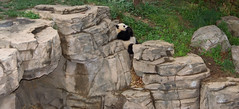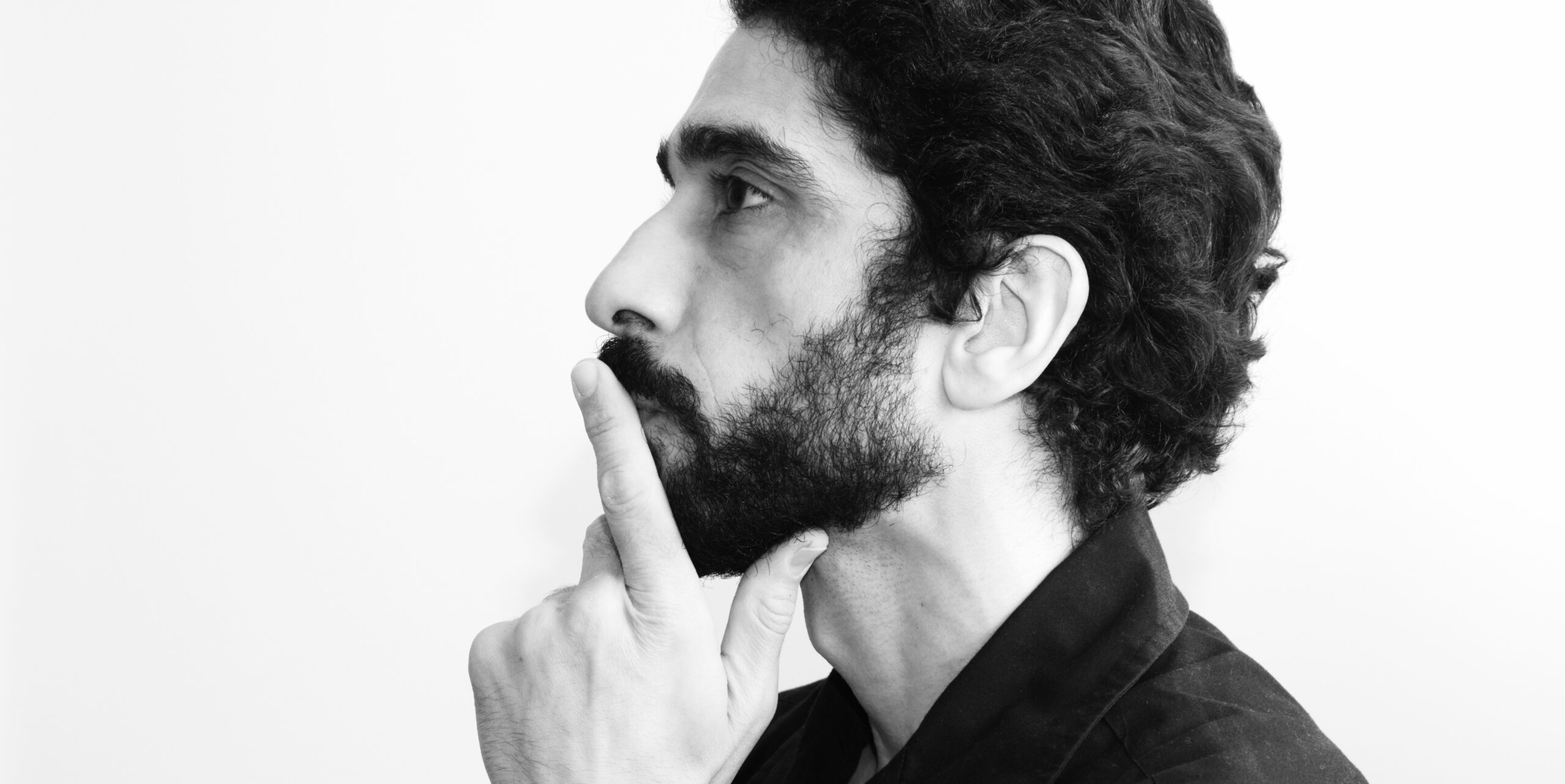
Wednesday I wrote about choosing the right camera. Today I wanted to write about choosing lenses for your dSLR. Just looking at the entire range of lenses available for a Canon EOS camera there are lenses from $89 all the way up to $8,000. You might see two lenses that go from 28-105mm, but one is $200 and one is $1,200. What’s the reason for the difference? I hope to demystify all of this with some knowledge I wish I’d posessed when I first entered the world of dSLRs.
Focal Range/Focal Length


This is the most important characteristic of your lens and is the first quality to consider. The simple explanation is that the focal length of your lens determines how far you have to stand from your subject in order to have it in full view. But that doesn’t tell the whole story. Not only does the focal length determine how far away you need to stand, but it also determines the angle of view. So if you have a wide angle lens of 17mm, not only can you stand pretty close to whatever it is you want to photograph, but you will also get more of the periphery included as well. So if you’re taking a picture of a person, you’ll also probably get some sky, some ground, and maybe some of the buildings to the side. With a telephoto lens of, say, 200mm you will need to stand far away if you don’t want to only capture the person’s face. And less of the sky, ground, and side objects will be in view. The focal length therefore determines what you can photograph. You will have a very hard time taking pictures indoors with a 200mm lens and you wouldn’t want to go on safari with only a 17mm lens unless you were going to get dangerously close to the animals. So you want to make sure you cover all the focal lengths that are important to you. Now you need to decide if you want a zoom lens or a prime lens.
Zoom vs Prime Lens

Ok, so one thing I had to learn is that a Zoom lens is not necessarily a lens that lets you get close up. That’s just what it means in the point and shoot world. You could have a wide angle zoom that goes from 10-22mm. You could zoom all the way in and still have to get pretty close to your subject to fill the frame. So a zoom lens is a lens that goes from one focal length to another. A prime lens is a lens that has only one focal length. If you want to change what you see in the picture you have to move yourself back and forth. So what’s the advantage of a zoom lens? For a given focal length range you don’t have to own or carry around as many lenses. If you got a 17-55mm and a 50-200mm lens, you’d only need two lenses for most photos. In fact, you could get a 22-200mm zoom lens and not have to ever change the lens on your camera. You’d be set whereever you went. So why would anyone want a prime lens? Well, first of all, they tend to be of much better quality. The fact of the matter is that zoom lenses are very complicated objects. It is very hard to make a lens that performs optimally at every focal length. Think of the expression “jack of all trades, master of none.” So if you want the absolute best quality photos, you need a prime lens. So why not only get primes? Do you want to go on vacation and have 30, 50, 100, 135, and 200mm lenses that you have to constantly change? Or would you rather have one lens that you can keep on and make sure you can get the action no matter how close or far it is? You’ve probably want the zoom lens! Definitely be wary of the prime lens snobs on the net. There are those who would tell you on every photo forum you could find that primes are awesome and zooms are crap and that’s the reason why your photos aren’t coming out the way you want. Not true. It used to be very true, but Canon and the other lens manufacturers have worked very hard to make zooms up to snuff. So while, yes, primes are better, if you’re not getting the results you want, don’t automatically blame your zoom. Now, generally speaking, there is one major point where primes tend to be better than zooms – they tend to have a better maximum aperture. You can get zooms with a really good aperture, but they tend to be the top of the line, extremely expensive lenses.
Maximum Aperture
The maximum aperture is what determines how much your lens can open up. Lenses with an f-stop of 1/2.8 and larger are considered “fast” lenses. I know I was confused when I heard that term. It has nothing to do with shutter speed, well, directly anyway. The larger the aperture can be, the more light can come in and therefore the faster you can have the shutter go for a proper exposure. Prime lenses tend to be fast lenses. With cheap zoom lenses, the maximum aperture will change as you zoom the lens. For example, the kit lens that came with the 350D goes from f4.5 to f5.6 as you zoom in. So if you zoom in you can’t shoot as fast – important in dark or suboptimal conditions. So usually one factor that will make one 17-85mm lens $200 and the other $600 is that the latter has a bigger maximum aperture. Canon’s best lenses, the L series, are usually “fast” lenses or very nearly so.
Lens Quality
There are two camps about lens quality. One camp says to get the focal lengths you need, even if that means a lower quality lens. The advantage is that you can start shooting now. While better lenses will produce sharper photos, what makes a great photo is practice, not expensive glass. So if you never use your camera because the kit lens of 17-55mm does not give you the range you need, you won’t be transformed into Ansel Adams by getting the best lenses. The other camp says that you should just save up all your money and buy the most expensive lenses you can. They say that once you become awesome at photography, those lower quality lenses will hold you back. If you can only afford 17-55mm L lens, then at least those pictures you take will be the sharpest quality shots and once your technique improves you’ll be able to dazzle everyone. So, it really depends on your personality and money situation. Of course, there are third party lenses to the rescue.
Third Party Lenses

So you want to expand your lens collection and also want to have good glass. Well, one option is to buy third party lenses. They aren’t officially supported by your camera manufacturer (Canon, Nikon, etc), but were created by reverse engineering the communications between the lens and the camera. Therefore, all of the features may not work correctly. In practice this has never been an issue for me. Third party lenses are often 2/3 to 1/2 the price of the name brand lens. So, if they’re so cheap, why doesn’t everyone just buy lenses from Sigma and Tamron instead of Canon and Nikon? Well, for one thing, Canon and Nikon have a huge incentive to make very good quality glass in order to keep you from jumping ship to the third party lenses. Also, generally speaking with lenses, you get what you pay for. For example, I have a Tamon 55-200mm lens. The autofocus is slower than most of Canon lenses and the pictures aren’t quite as crisp as some of the better Canon lenses I own. That said, I’ve still been able to get some good pictures with it. I just need to know the limitations of the lens and work with it. And it has allowed me to get lots of pictures I would have otherwise missed, such as this whale picture.
Also, it’s not always doom and gloom when it comes to third party lenses. After reading a review of wide angle zooms in Photo User magazine, I found out that the Sigma 10-20mm actually outperformed the Canon lens in the similar zoom range. The best part is that it costs half as much as the Canon lens! So, while I prefer to get name brand lenses, there are some circumstances where the third party lens might do better! There’s also the Sigma 120-400mm lens – sure it’s not exactly the equal of the Canon EF 100-400mm L lens. It’s missing 20mm, for a start. But the reviews are good and it costs less than half as much. So if it will allow me to get telephoto enough to get bird shots and good wildlife shots at the zoo, I’m willing to buy that one for now. Also, with this specific comparison – the Canon lens is a bit older and is uses a zoom barrel that’s like a trombone – you have to pull it out instead of twisting it to zoom. You can find PLENTY of people who complain about that online. So, personally, I would buy the Sigma now and perhaps get the revision 2 of the Canon lens in a few years when it finally comes out.
One more perk that the third party lenses usually throw in is that they include the lens hoods for free. Canon makes you buy them for $30 or more. So, in the end, your best bet is to do some research. Some lenses like the Tamron one, aren’t as good as the Canon lens, but may be what you can afford. Some lenses like the two Sigmas I mentioned might actually outperform the Canon lens. And sometimes, nothing beats the Canon lens. So you need to see what you can afford and go for that.
Extra Features
There are some more extra features that can push up the price of a lens and you might not understand the difference. One of them is called USM, which stands for Ultra Sonic Motor. Sigma calls their version HSM for Hyper Sonic Motor. Nikon has a similar technology with a similarly unhelpful name. What does USM do? Basically it means the autofocus is faster and quieter. These lenses usually cost more than the lenses that don’t have it. Are they worth it? Well, I own both USM and non-USM lenses and the difference is like night and day. It’s so good that I have resolved to try and not buy any lenses that don’t have USM. Sometimes it’s too expensive and I can’t buy the USM lenses, but it really has to be a lot more expensive for me to turn it down. The autofocus on USM lenses is so quick it almost eliminates the need to prefocus in an action-packed event like a sporting event. And the sound is so muted, you can only barely hear it. Of course, who cares if you hear it, right? I don’t know – there’s just something more pleasant about USM’s silent focusing.
Another extra feature is image stabalization (IS). (Sigma calls it optical stabalization) I do not currently own any IS or OS lenses, but I hope to change that soon enough. I have used a friend’s IS lens. I found it useful enough that I would also try to make sure I get an IS lens whenever possible. There are two times when IS really comes into its own. First of all, if you are shooting at the longer telephoto end – 200mm and above – it starts to become impossible to shoot hand-held. The rule of thumb is that you need to have your shutter speed at 1/lens size. So a 200mm lens needs to be at 1/200. So a 600mm lens needs to be at 1/600. You might not think this is a problem, except the best times to shoot are in the morning and evening when the sunlight is least powerful. So it might become really hard for you to shoot at 1/600 and not have a completely dark image. Even at noon, sometimes you have to go to f11 or smaller and need a slower shutter speed. That’s when IS is very important to have. Or you could lug around a tripod and monopod everywhere you go.
Another choice you can make is whether or not to buy Macro lenses. If you plan on doing macro photography, nothing beats the quality of the lens. I’ve taken many photos with my macro lens and it really does do the job exceptionally. Also, macro lenses can be used to photograph regular subjects. They usually have really good glass so they are generally good portrait lenses. If you’re only going to do macro shots here and there, it’s probably not worth buying one. Finally, a lot of zoom lenses will claim to be macro – this just means they can focus a little closer than usual. Most of the time it’s marketing hype.
The final two features have to do with how the lens focuses. The cheapest lenses (like the 17-55mm kit lens) rotate the front of the lens when you focus. This is annoying because if you have a circular polarizer on your lens, you will need to reset it ever time you focus. The next level up from this have the front of the lens go in and out as it focuses. This is less annoying, but can become a problem if you’re focusing close to the object for closeup or macro photography. Also, it tends to get more dust into lens. The best lenses have internal focusing. These tend to be found in good quality USM lenses. The front does not rotate nor does the lens expand as you focus. There is no way for anyone to tell if the lens is focusing just by looking at it. You can use your filters just fine. This is a less important feature, but it is something to consider.
EF vs EF-S Lenses
Canon has an APS-C sensor on the 50D and cheaper cameras. It has a full-sized sensor on the 1Ds and 5D. APS-C cameras can take EF and EF-S lenses while the others can only take EF lenses. The difference is that the EF-S lenses take advantage of the fact that the sensor is smaller and make smaller, lighter lenses. Another important thing is that all of Canon’s best lenses (the L series) are only EF. So which should you buy? Well, it depends. First of all, are you a professional? If yes, then you must own a 5D at the least and the choice is simple – EF lenses are your only choice. Second, do you want only the best quality glass? If yes, then you must get EF lenses to get the L series. Ok, if neither of those applied to you, you have a decision to make. Will you eventually upgrade to the 5D or 1Ds? If yes, you’d probably best spend your money only buying EF lenses. If no, then you can probably stick to the EF-S lenses. Nikon users have the same issues, but I don’t know the camera makes and models.
Weight and Size
I put this category last because, in a lot of ways, you don’t have much control over it. If you buy EF-S lenses they will be smaller and lighter. If you buy a 600mm lens, it will weight a lot. It’s more of something you need to be aware of. If you think that heavy lenses will keep you from using your equipment too much, you need to take that into account when you buy lenses. Generally speaking, lesnes with smaller zoom ranges will be lighter.
Conclusion
I really hope you found that helpful. If I would have known all of that from the start, I might have made my lens buying decisions slightly differently. Feel free to leave comments with your tips for choosing lenses.


20 responses to “Choosing a Lens”
Fantastic write up.
I’m new to SLR photography and currently in the market for a body and lens(es). This was the most helpful article I have come across on the subject.
Thank You!
Awesome ! I wrote this to help out!
Very good read. Simple enough for someone just getting into photography to understand
Thanks! I’m glad it was helpful!
at last.. something that makes sense to me… thank you very much Eric.
I’m really glad to hear that! Thanks!
Thanks Eric.
Incredibly valuable information that I keep bookmarked just in case I need to refer back.
Tomorrows the day for me, my purchase of the Nikon D90 and have been mulling over what type of lens to get with it. As a late comer into the Photography scene I have been raking my head with all this info which gets a bit overwhelming. Your article was very clear and concise and most importantly very helpful
Thanks
Thanks!
[…] […]
I always wanted to shoot longer focal length subject such as in the zoo or a building.. I using Canon EOS 1000D or Rebel XS with kit lenses EF-S 18-55mm IS..
I found limitation with the lenses and length i need to use to focus ths subject.. Currently I think of getting a new lenses, brand which is appear in my mind would be Tamron 70-300mm, Sigma 70-300mm and Canon 55-250mm
If you were me, which would you choose and why? 5 Months i still couldnt place my order at the shop..
I very thanks for your comment..
I would need to know a little more about each specific lens. But if your goal is to be able to reach zoo animals, then the longer the better and you’d probably be better off with the Sigma or Tamron. I’d read reviews of the lenses and make sure you aren’t sacrificing quality for length. Also, you don’t mention the f-stops and that could make a big difference in which one to get.
Extremely useful article. I’ve taken notes while reading.
Thank you 🙂
Jo
You are welcome. That’s the best comment any author can get.
This article clarified several topics for me, and answered questions that I didn’t even know HOW to ask! Thanks for helping someone who is just starting on the road to better photographs.
Awesome. Glad to have been able to help you out!
Awesome! I’m glad I could help you out!
Great article – just a note to new readers – the 18-55mm is the kit lens on the canons. The 17-55mm lens is the expensive, fast lens that is over $1000-00 (reasons – f2.8, IS and USM as described in this article above).
I’m also in the same boat as John, looking to buy a D90 and mulling over which lenses to get – this post was very helpful and I’ll be re-reading it again before buying, thanks!
Thank you very much for the kind words. I’m glad to be a help to the photographic community. If you alway want to help me defray the costs of the server, if you were going to buy from B&H anyway, be sure to click on the B&H ad on the left sidebar. I’m part of an affiliate program and all the money from that goes to pay for my server costs.
Thanks!